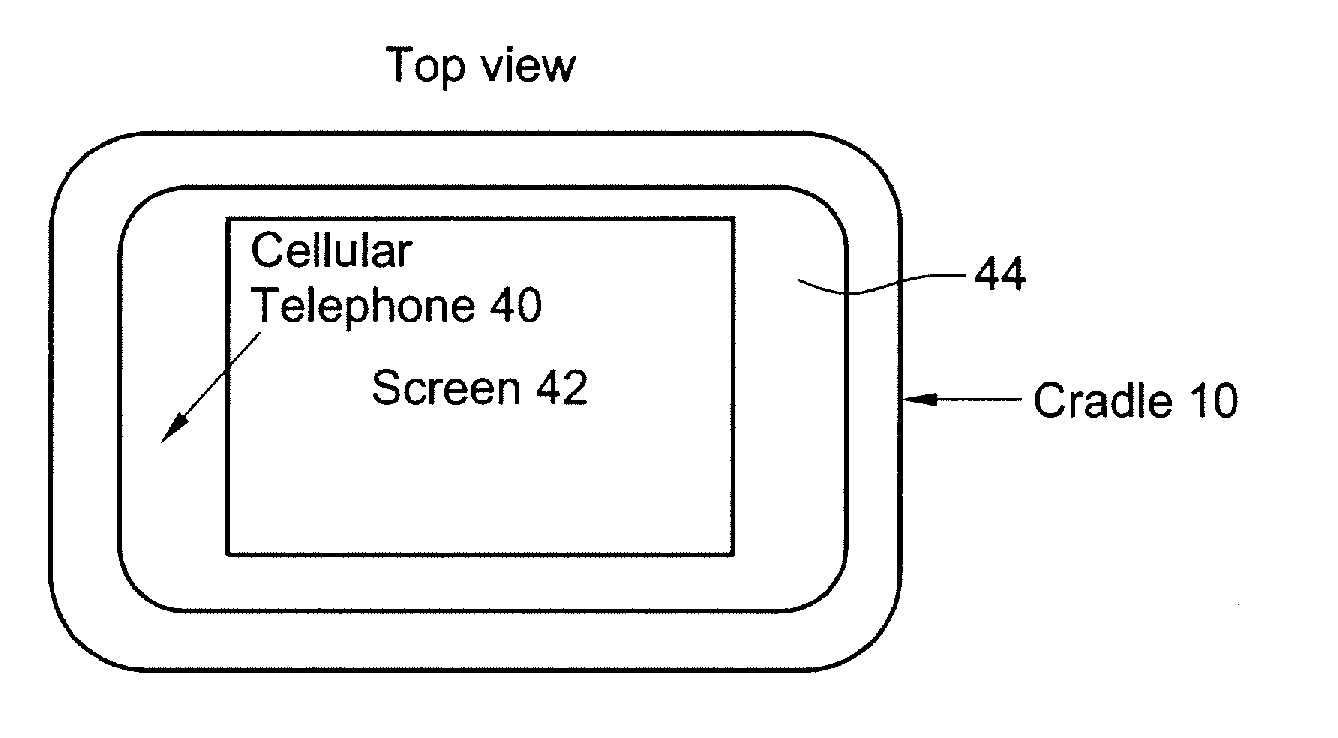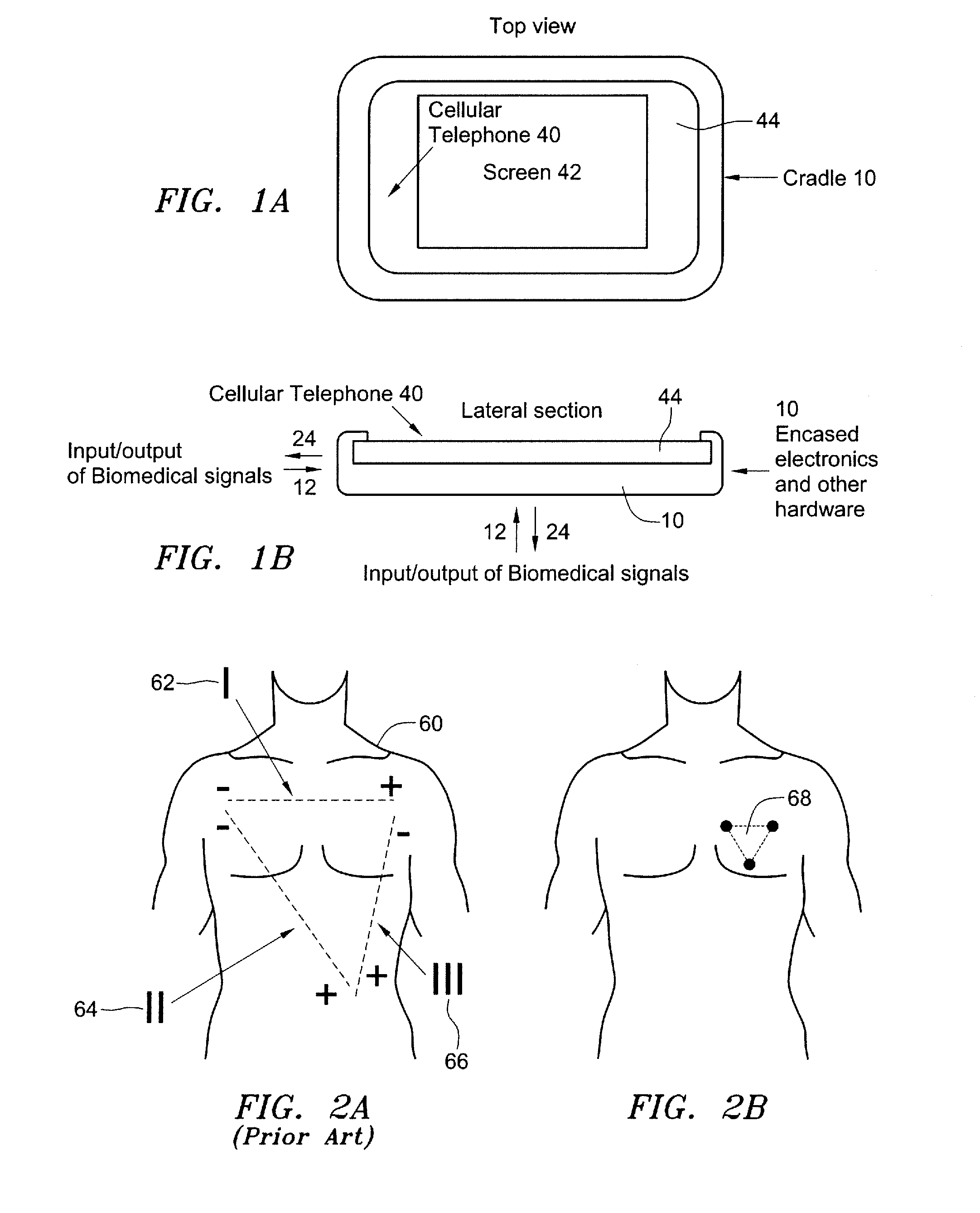Multipurpose, modular platform for mobile medical instrumentation
a mobile, modular technology, applied in the field of medical instrumentation systems, can solve the problems of medical equipment cost or price, complicated hardware and electronics, and high cost of medical equipment used in hospitals, and achieve the effects of less development cycle and production cost, more economical implementation, and less cos
- Summary
- Abstract
- Description
- Claims
- Application Information
AI Technical Summary
Benefits of technology
Problems solved by technology
Method used
Image
Examples
embodiment 1
Electrocardiogram
[0047]A first embodiment and example of the invention is the implementation of a portable electrocardiograph. This application allows the health care provider to measure directly the electrocardiogram by placing the electrodes directly on the skin of the patient, avoiding the use of skin adhesives that have the potential to damage the skin; this feature is particularly crucial in premature and newborn babies, as the peeling of the electrodes damages the delicate skin of the infant. Furthermore, in addition to being inexpensive and portable, this embodiment of the invention is completely wireless, making it a one-piece handheld device without cables or added pieces. This feature is crucial in emergency situations, where rapid measurements are critical.
[0048]The electrode distribution is understood with particular reference to FIGS. 2 A, 2B, 3, 4 A, B and C, 5 and 6.
[0049]In classic, prior art, bipolar electrocardiogram recording, leads I, II, and III define a triangl...
embodiment 2
Low Power Transmitter / Receptor of Biomedical Signals
[0056]In a second embodiment, the device of the invention is used to collect, store, display, relay, and transmit biomedical signals. This application allows the implementation of low-power, short range transmissions carrying the information of a biomedical signal to a cellular telephone.
[0057]In this embodiment, the cradle 10, described in detail in embodiment 1, houses a low power transmitter / receptor. One of the advantages of this embodiment is the reduction in the power of the radio signals applied to the patient.
[0058]The first example of this embodiment is presented in FIG. 5. The electrode configuration to detect the electrocardiogram is similar to the description of embodiment 1. The electrodes are located in a handheld device, containing the amplifier circuit and a low power emitter. The left panel of FIG. 5 shows the example of a portable electrocardiogram in operation. The electrode configuration is similar to the config...
embodiment 3
Point-of-Care Clinical Laboratory Testing
[0061]In a third embodiment, the device of the invention is used to measure clinical laboratory variables by housing the necessary hardware in the cradle 10 and utilizing a removable cartridge where the biological sample is placed.
[0062]The first example of this embodiment corresponds to electrochemical methods, such as amperometric measurements using substrate specific enzyme-linked reactions, or voltmetric measurements. This example is presented in FIGS. 7 A through D. The cradle 10 has a lateral cartridge slot 80 for insertion of the cartridge carrying the biological specimen. FIG. 7 A shows the cellular telephone inside the cradle 10. The middle panel shows the lateral view of the cradle 10 showing the cartridge slot. FIGS. 7 B and C show depictions of the cartridge. The cartridge has an internal well to house fluid samples, the necessary reagents for the chemical reaction to take place, and the electric connections (see, electrodes 88FIG...
PUM
 Login to View More
Login to View More Abstract
Description
Claims
Application Information
 Login to View More
Login to View More - R&D
- Intellectual Property
- Life Sciences
- Materials
- Tech Scout
- Unparalleled Data Quality
- Higher Quality Content
- 60% Fewer Hallucinations
Browse by: Latest US Patents, China's latest patents, Technical Efficacy Thesaurus, Application Domain, Technology Topic, Popular Technical Reports.
© 2025 PatSnap. All rights reserved.Legal|Privacy policy|Modern Slavery Act Transparency Statement|Sitemap|About US| Contact US: help@patsnap.com



